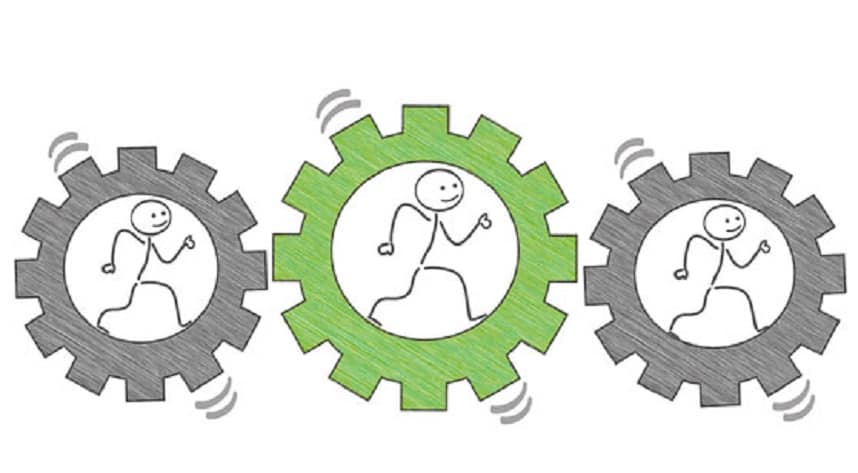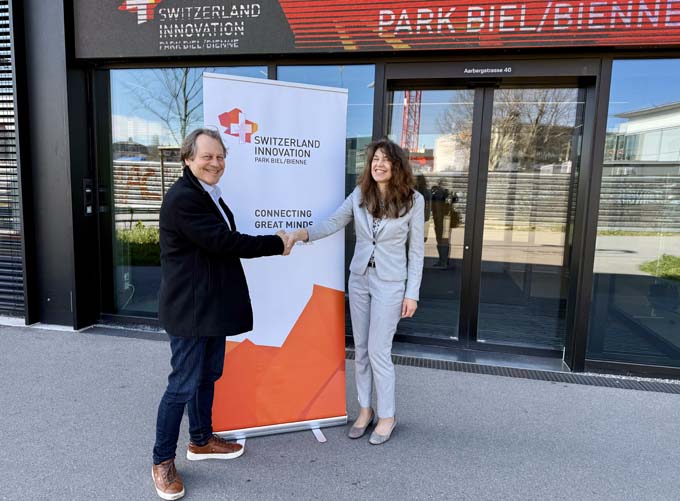A good double: UX Design and Scrum
In software development, Scrum is increasingly gaining acceptance as an agile project management method. In the meantime, there are numerous workshops, comprehensive literature and a large number of experienced Scrum experts. In the Scrum context, however, it has so far been neglected to integrate other elements and specialist disciplines that are essential for a strong product - such as user experience design (abbreviated: UX design).

A good user experience (UX) leads to the fact that users like to use a product or software, and is therefore an essential success factor. Nevertheless, in practice, user experience design and the Scrum process have so far usually only appeared side by side and have few points of contact: The user experience design - from user research to the definition of personas to the development of sketches and wireframes - is often created in advance and then handed over to the development team for implementation. To make matters worse, external, specialized agencies - which often work according to the classic waterfall method - usually create the user experience design. This is mostly due to the fact that when IT companies were founded, especially those that have been around for a long time, the topic of UX was not as much in the foreground as it is today. But only when user experience design and development compete together in an agile process is there a victory at the end: a successful product that not only works, but that users also enjoy using.
UX design in the Scrum process: 3 aspects
Success factor 1: Physical proximity - for more exchange and mutual understanding
Often the relationship between designers and developers is rather strained. This is often due to the fact that both groups know little about the work processes of the other. For example, it is often not easy for designers to understand how developers continue to work with the designs they have provided. The developers, in turn, often have no idea of the processes designers go through to create a valid concept. For both sides, it is sometimes very opaque what the other group does in their daily work. Clarification work on the part of the project management and the team members themselves can initially create a basic understanding here. It should be explained what the tasks of the individual roles are and to what extent processes in software development must also be adapted through the integration of the designers. It is important that all team members understand that a successful product can only be created through good interaction between both processes - user experience design and software development.
To improve the understanding of each other's work, spatial proximity is an essential aspect: When designers and developers work together in the same room, they get to see what each other is working on. They can ask each other questions and/or visibly display their work steps, such as designs or software architecture images, in the room. By visibly visualizing what they are working on, conversations and discussions can occur more easily and quickly. Short communication channels lead to questions being asked more frequently and clarified more quickly, and thus have a positive effect on the product result.
If time permits - and the corresponding expertise is available - the designers can also support the developers in programming, for example in the area of front-end development. The advantage: self-designed designs can also be technically implemented immediately and thus tested for their feasibility. Conversely, the developers can also participate in the creation of the user experience design as part of the Scrum process, for example by creating mockups or prototypes.
Success factor 2: Consider UX design already in Sprint 0 - for relevant personas and good user stories
In the Scrum process, the time before the first Sprint is used for preparatory measures, such as setting up the technical architecture. This period is also referred to as Sprint 0. The first conceptual and creative process steps of the UX design can be well integrated into this phase. The goal of Sprint 0 in this case is to jointly develop a fundamental understanding of the user and a unified product vision. For this purpose, a workshop is recommended in which all project participants - developers, user experience designers, product owners and ideally also the stakeholders - develop a big picture of the UX idea. Likewise, the first steps of the UX design should already be implemented in Sprint 0: User Research, Persona- creation and the development of requirements in the form of User Stories. On this basis, the participants can jointly develop a product backlog that is comprehensible to all. Daily Scrum meetings should already take place in Sprint 0, in which the team members inform each other about the progress and current status of the preparation phase.
At the end of the sprint, the product owner sorts the user stories that are developed together in sprint 0 according to their priority. The user stories that represent the so-called Minimal Viable Product (MVP) - i.e. the product or feature that brings the greatest possible benefit for the user with the least effort - are prioritized the highest. These user stories should then be implemented in the first sprints.
In order to estimate how many sprints will be needed to implement the MVP, developers should estimate the effort of the prioritized user stories in Sprint 0. The task of the user experience designers in this phase is to describe the value and benefit of a user story and to remind the developers of the effort required to implement the design.
It can be difficult for developers to estimate effort when there is not yet a defined user experience design. To achieve a common understanding - and thus a more accurate estimate - of the user stories, it is recommended to create simple (paper) prototypes during Sprint 0. In this way, the ideas of all project participants can be quickly visualized and thus better discussed in the group. The most viable ideas can then be further developed and ideally tested for usability using prototypes while still in Sprint 0, e.g. by colleagues. The testers' feedback can then be taken into account in a quick iteration. Due to the parallel development, only the user experience designers will be able to perform the complete process over and over again during the course of the project, i.e. continuous user research, adaptation - and if necessary re-creation - of personas, creation and testing of prototypes, etc. During the process, the user experience designers should make sure to regularly share their findings and results with the rest of the team.
Success factor 3: Involve UX designers in all Scrum meetings - for the "big picture".
The prerequisite for a holistic integration of the user experience designers into the Scrum process is their participation in all typical Scrum meetings. In the context of this "institutionalized" exchange between developers and user experience designers, both groups can quickly find out whether the user experience design created can be implemented with reasonable effort. Furthermore, the developers also have the opportunity to let their ideas and views flow into the UX design process.
Close collaboration between UX designers and product owners is also recommended, especially when designing user stories. They can use their experience in dealing with users and their needs when creating user stories and create user experience designs for the planned user stories. Care should be taken to create very detailed user experience design only when it is needed - and not well in advance. The same applies to the final formulation of the user stories, as it is very likely that initial user stories will change in the course of the project due to new insights. Thus, it is advisable to finalize the user stories in terms of their user experience only one or two sprints before the planned implementation in order to minimize the workload. As an integral part of a Scrum team, the user experience designers are always available for queries. This helps to prevent duplication of work, for example, if a detail about the behavior of the user interface was understood differently by the developer and implemented without further inquiry.
User tests are another field of activity that UX designers can take on during development. For this purpose, it is recommended to conduct usability tests with selected users at regular intervals - about every two sprints - ideally with prototypes first. This gives the target group the opportunity to evaluate newly implemented product increments. Early consultation with the users has the advantage that any change requests from the users can be taken into account immediately. Especially if the adjustments are already made to prototypes and not to the already developed software, this means enormous time and cost savings. Adjustments can be made directly in a subsequent iteration, or the change requests are anchored in new user stories. To maintain a transparent exchange with the Scrum team, the UX designers should present the results of the user tests in the Daily Scrum.
Conclusion
User experience designers can take on comprehensive tasks in a Scrum team and contribute significantly to the success of the product. The prerequisite for this is that the UX designers play a dual role as partners of the developers in the Scrum process. On the one hand, it is their task to look ahead and to drive forward a user-oriented development of the product by means of user research, user tests and prototype creation. On the other hand, they should always be available for inquiries from the developers regarding currently processed user stories, validate the already implemented user stories and, if necessary, test them on the target group. At the same time, everyone involved should be aware that there is basically no final solution in agile software development. With the release of a software product, the development and the user experience design is not finished. In principle, a new match already begins at this moment.









